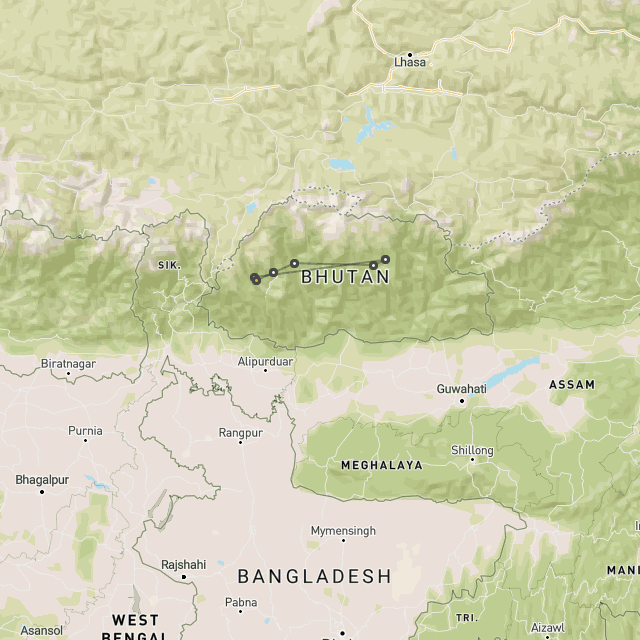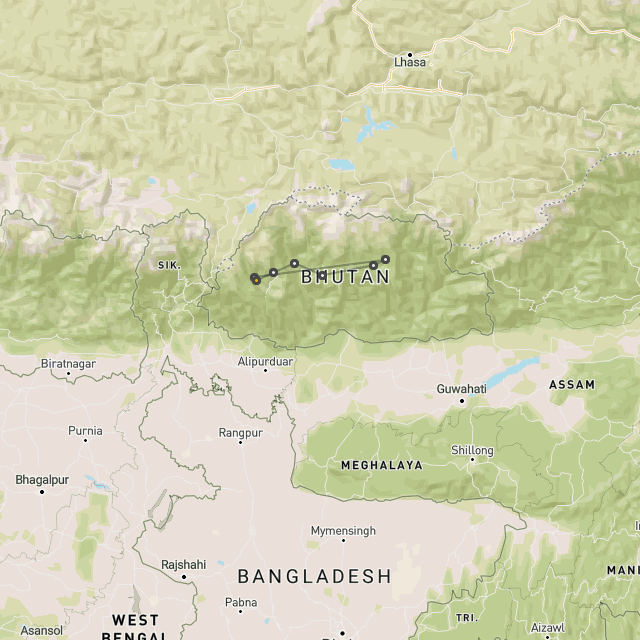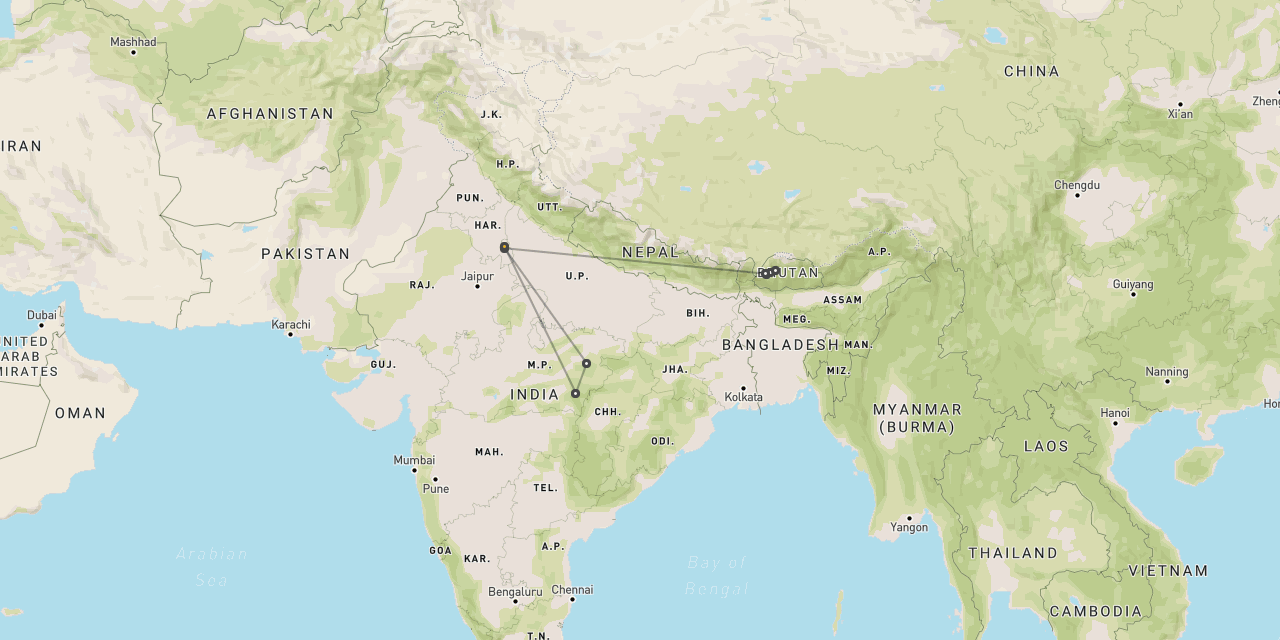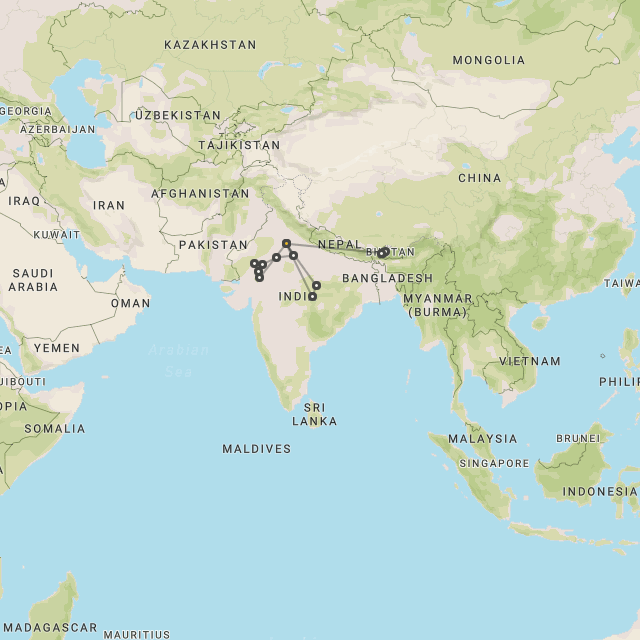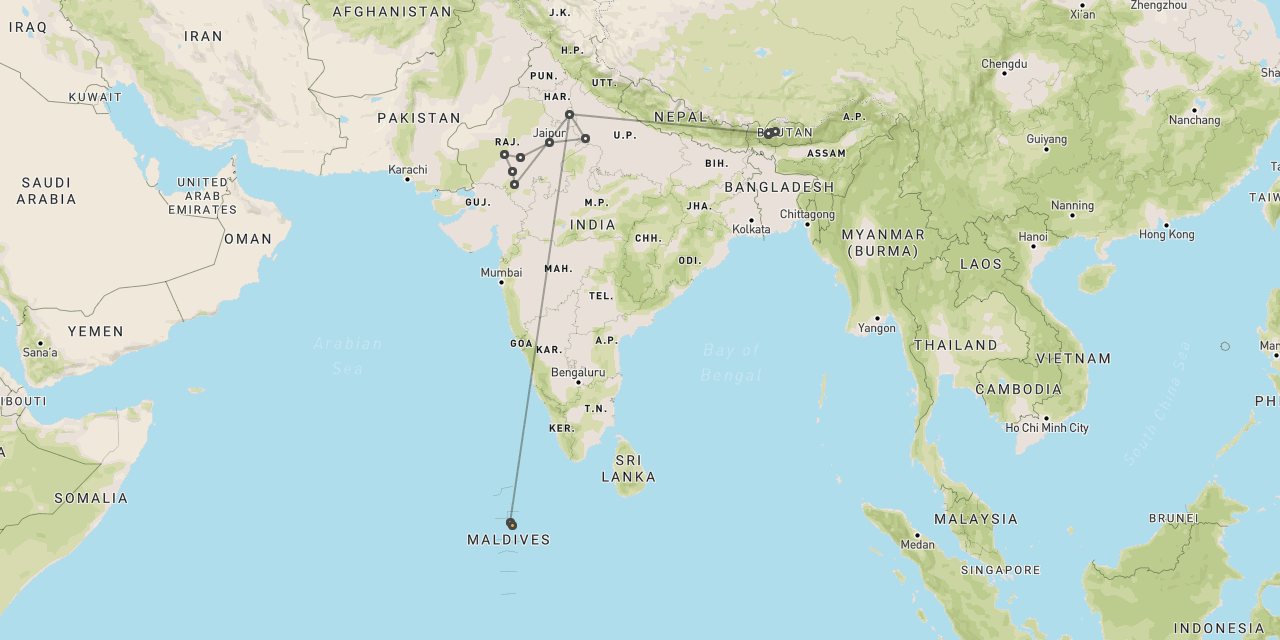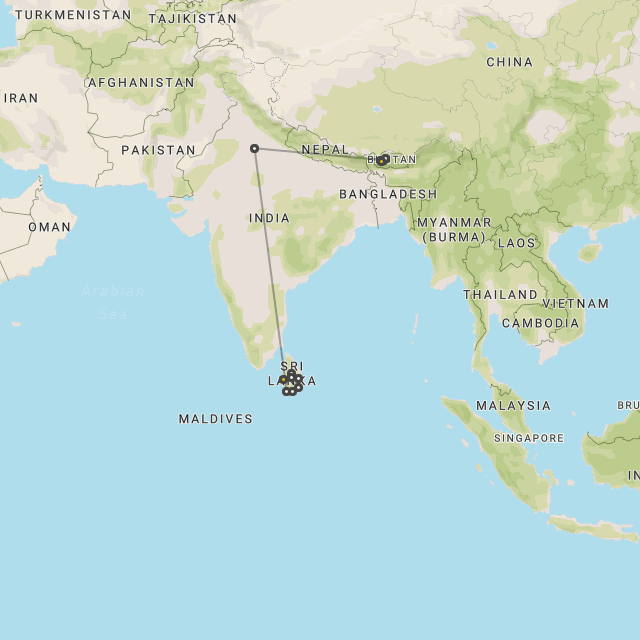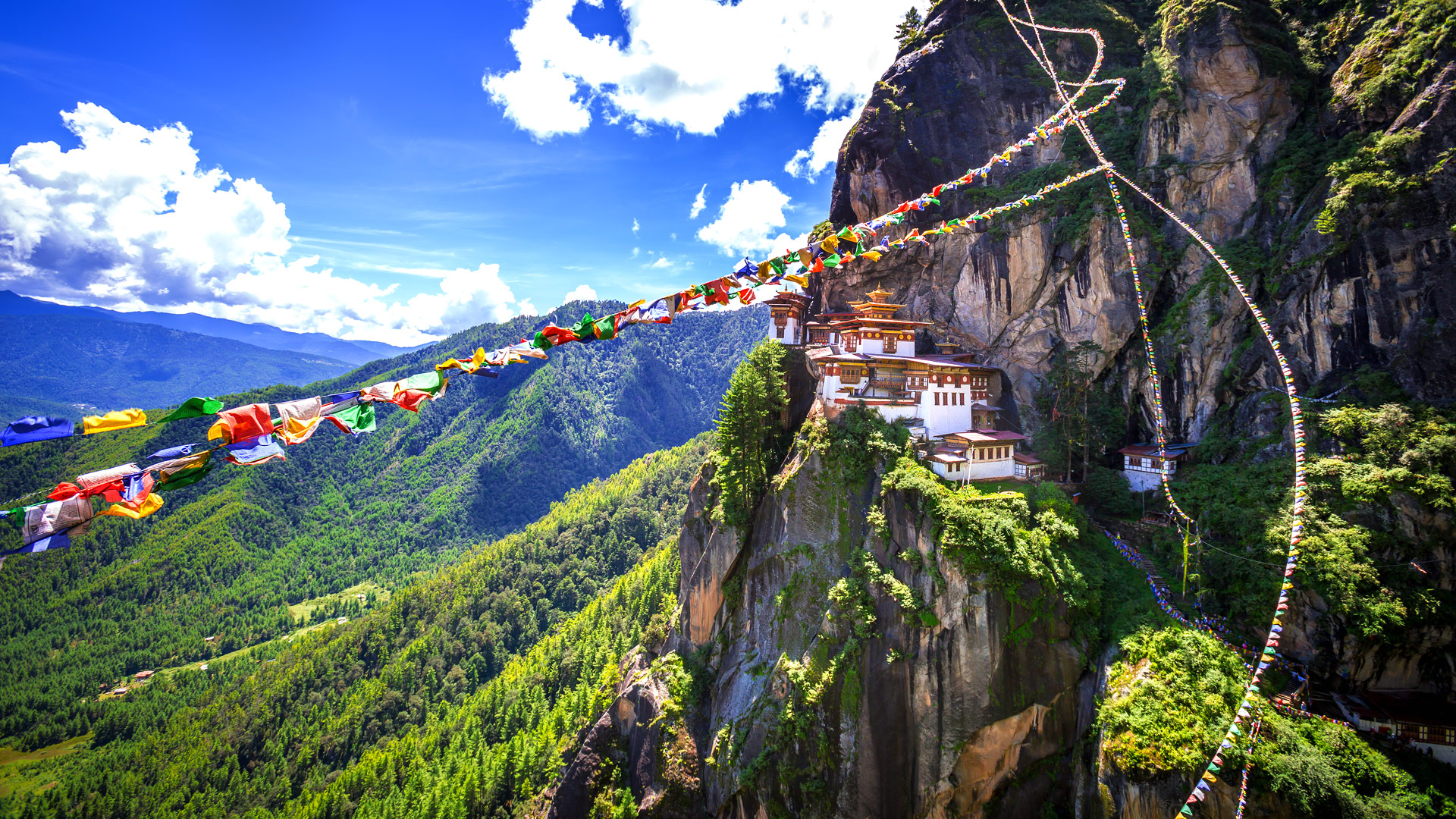
Travel in Bhutan
Bhutan
is a magical Buddhist country
tucked away in the Himalayas
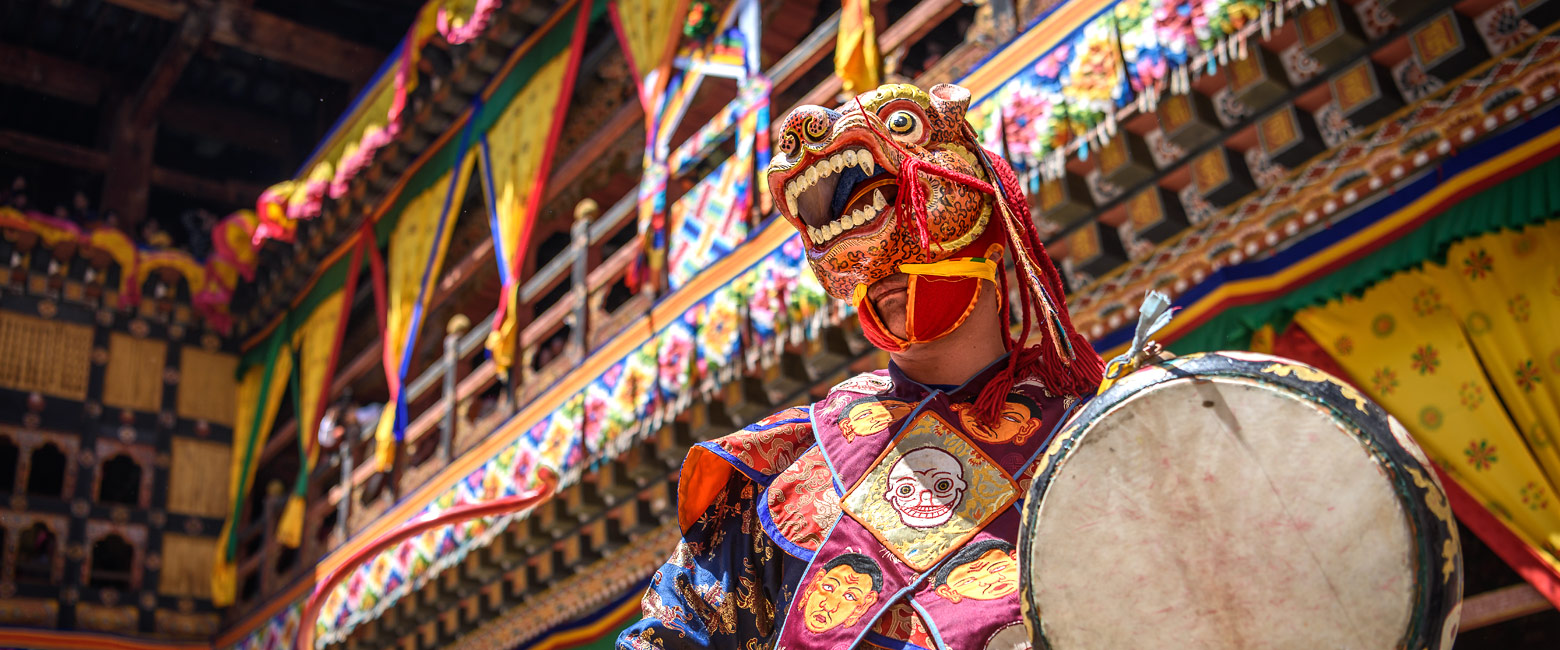
the purity and wisdom of the Buddhist way of life
Bhutan is a mountainous country, which is tucked away in the Himalayas between northeast India and southern Tibet.
Known locally as Drukyul, the Realm of the Thunder Dragon, this is an almost mythical place, a hidden kingdom which remained virtually closed to the outside world until relatively recently.
The country is ruled by a constitutional monarch and has Mahayana Buddhism as the official religion. Famously the government is primarily driven not so by financial motivations, but by a metric known as Gross National Happiness. It tops the world rankings for economic freedom, ease of doing business, peace and lack of corruption.
The landscapes in Bhutan area famously varied, ranging from the tropical forests of the southern foothills (home to Bengal tigers), through alpine valleys and meadows, to mountain forests of rhododendrons, bamboos and pines, all the way up to lofty summits including Gangkhar Puensum (the highest unclimbed mountain in the world).
The country also has an incredibly diverse range of cultures. Although Buddhism remains a common theme, each valley system is home to a slightly different mix of peoples, with various languages, traditions, farming techniques, belief systems and traditional dress.
The country has pursued an enlightened policy of low-impact high-value tourism, keeping numbers down to around 120,000 visitors per year. Guests are obliged to spend a minimum of around USD 250 per day during their stay, a proportion of which contributes directly to the nation’s health, education and conservation sectors. The government also protects indigenous cultures by heavily restricting outside commercial interests, so there are no Starbucks or KFCs here in Bhutan.
The main reasons to visit Bhutan include experiencing the wonderful Buddhist culture and famously warm hospitality, visiting various monasteries, experiencing the epic religious festivals, exploring villages, enjoying the mountain scenery and undertaking some truly world-class hiking, trekking and mountain-biking. The country really has something for everyone, is an easy and healthy place in which to travel and is particularly child-friendly.
Another consequence of the national tourism policy is that Bhutan contains an extensive range of genuinely upmarket lodges, to supplement the simpler and lower cost local options.
We also work with some of the very best people in the country, with specialist mountain bikers, trekkers, naturalists, archers, photographers, cultural and spiritual guides, all with that very special warmth that is characteristic of the lovely local people.
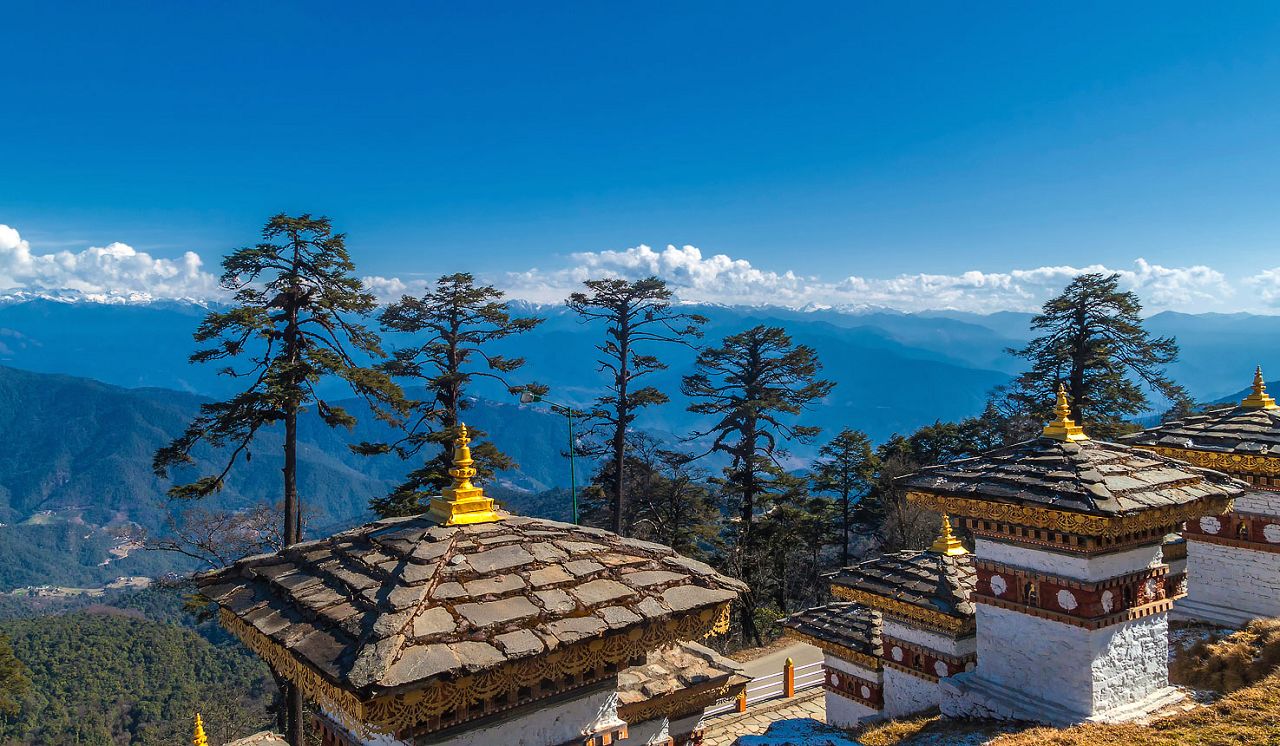
Gallery
Map
The best time of year to visit Bhutan is generally considered to be Sep-May, avoiding the warm and wet Jun-Aug monsoon season and the Jul-Aug fly season.
If you want to include a lot of outdoor activity such as high altitude treks and mountain biking, then it is best to head for the two shoulder seasons of Mar-May (Spring) and Sep-Nov (Autumn).
If you are looking for a trip with a more general focus, of scenery and culture, then you can also consider the Dec-Feb (winter) season, when the clear skies and very low rainfalls often deliver the best mountain views, although the landscapes can be a good deal less colourful.
The climate throughout Bhutan varies enormously between the different valleys, largely dependent upon their altitudes.
At the low end, the Punakha Valley is down at 1300 metres (4300’) and experiences a sub-tropical climate.
At the other end of the spectrum, the Gangtey and Bumthang valleys are up at 2900 metres (9500’) and experience a much cooler climate, often with freezing temperatures at night throughout the Dec-Feb winter season.
The Thimphu and Paro valleys lie in between, at 2300 metres (7500’) and 2200 metres (7200’) respectively.
There is also a considerable variation in climate, especially in precipitation, between the leeward and windward sides of the north-south valleys.
Thimphu Valley, for example, lies on the leeward side and is comparatively dry, with predominantly coniferous vegetation. By contrast Punakha is on the windward side and is dominated by broad-leaved forest.
As you travel through Bhutan, you are likely to travel east-west, crossing high passes between the various valleys, in which case you should encounter an unusual diversity of climates, landscapes and vegetation zones.
The weather data provided in the following sections is for the capital, Thimphu, and should represent media conditions for the country as a whole.
Getting around
The vast majority of international visitors fly into the main airport at Paro in the west of the country and spend 7-14 nights exploring up to five main valley systems. The rest of the country remains extremely remote and virtually untouched by the outside world.
International flights
Almost all of our guests visiting Bhutan enter and depart by air via the international airport in Paro (PBH).
There are very few long haul routes direct into Paro, which is only serviced by two carriers, Druk Air and Bhutan Airlines, both based in Bhutan.
The most common access route is via Delhi, but there are also connections with Nepal, Thailand, Singapore, Bangladesh and other locations in India.
We often end up providing these flights, since our intimate connections on the ground in Bhutan are often able to overcome ‘irregularities’ in the levels of service (such as passengers getting bumped off due to overbooking).
Please note that if you are planning to transit through India, then you may need to purchase an Indian visa in advance. We also recommend that you travel hand luggage to Delhi, in order to avoid bags getting lost.
Internal flights
Bhutan has a limited network of internal flights, with the main route being the return leg from Bumthang to Paro, which we use to save guests having to drive all the way back along the same route.
It is also possible (but pricey) to charter helicopters, both to journey between locations, and to provide uplift for various hikes and mountain-bike trails.
Road connections
The main roads in Bhutan are limited, but surprisingly good. The primary route that connects the five valleys is paved and usually free from serious obstructions. Traffic is very light, other than in the immediate vicinity of Thimphu.
In some of the more remote areas, the roads are dirt and can be rather more challenging, particularly due to summer rain or winter snow.
All road transfers are carried out by private vehicle, in the company of both a guide and a driver.
Driving distances and times :
Paro to Thimphu : 54 km : 1 hour
Paro to Punakha : 140 km : 3-4 hours
Paro to Gangtey : 185 km : 4-5 hours
Gangtey to Bumthang : 180 km : 6-7 hours
Where to stay
Thanks to the presence of a handful of international hotel operators, Bhutan is surprisingly blessed with a collection of genuinely high quality lodges, with at least two top-end options in all the main locations.
Beyond those options, there is also a small selection of characterful local options in most areas (although definitely not as many as we would like), as well as quite a few rather bland mid-range and lower-cost properties.
If you enjoy outdoor activities and nature, then we also have the option to set out a tented bivouac into any number of wonderfully scenic spots out in the mountains.
It is perhaps worth mentioning that we usually recommend strongly against combining too many properties from the same stable. For example, it may be convenient to combine three or four of the Amankora properties, but the resulting trip would risk lacking the diversity needed to provide a proper Bhutan experience.
The usual way to go about choosing where to stay during your trip is to start by selecting the locations you would like to visit, then looking at the various options in each area.
explore by road in the company of a private guide
let us know your thoughts about Bhutan
and we will help you create the perfect trip
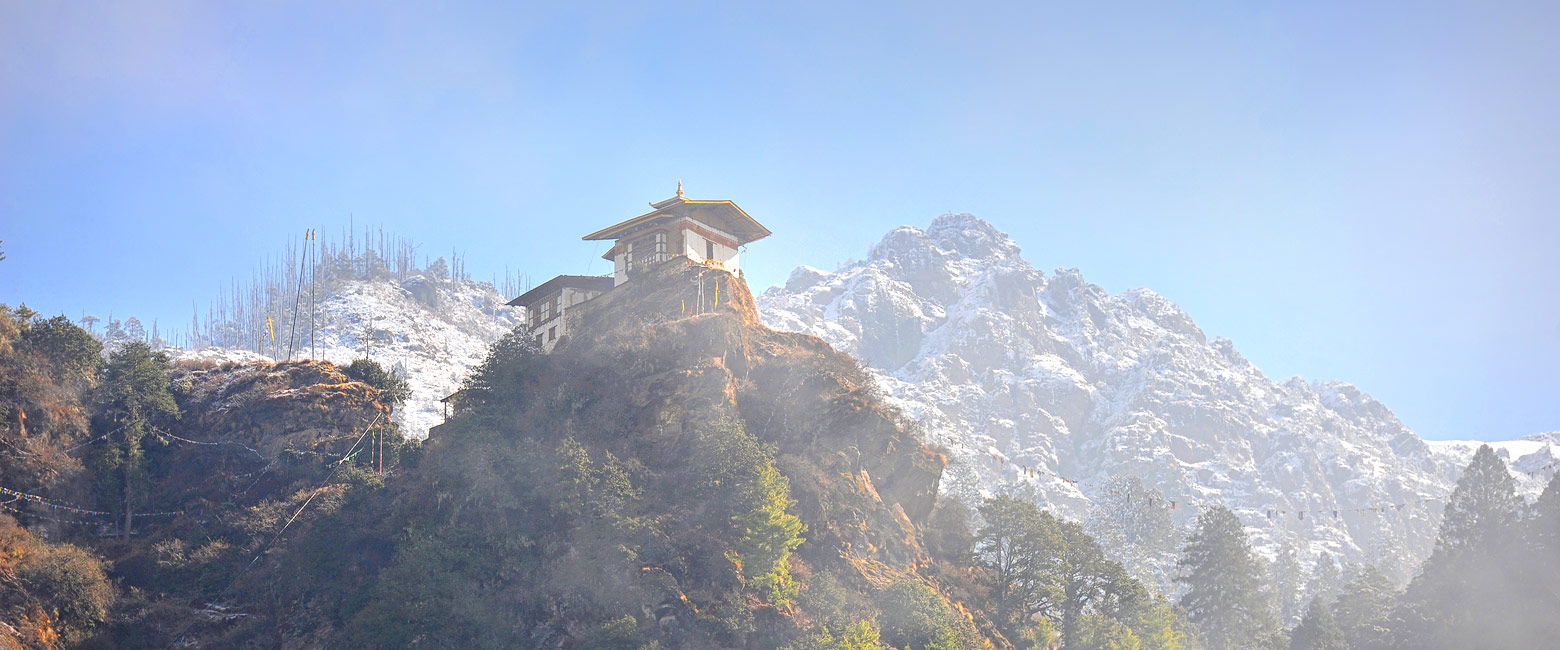
Extraordinary tailor-made adventures,
from earthy and edgy to easy and extravagant
From around USD 2500 per person, you set the ceiling
Sample Trips
Here are some of our popular trip shapes

Get started on your trip
It’s never too soon to get in touch, we are here to help with every stage of your planning.
Best Lodges
We regularly inspect and photograph all of the the best lodges, to ensure that we always recommend the most suitable options
Key Locations
Take a look around related locations. Click ‘View more’ to explore locations further afield.

































